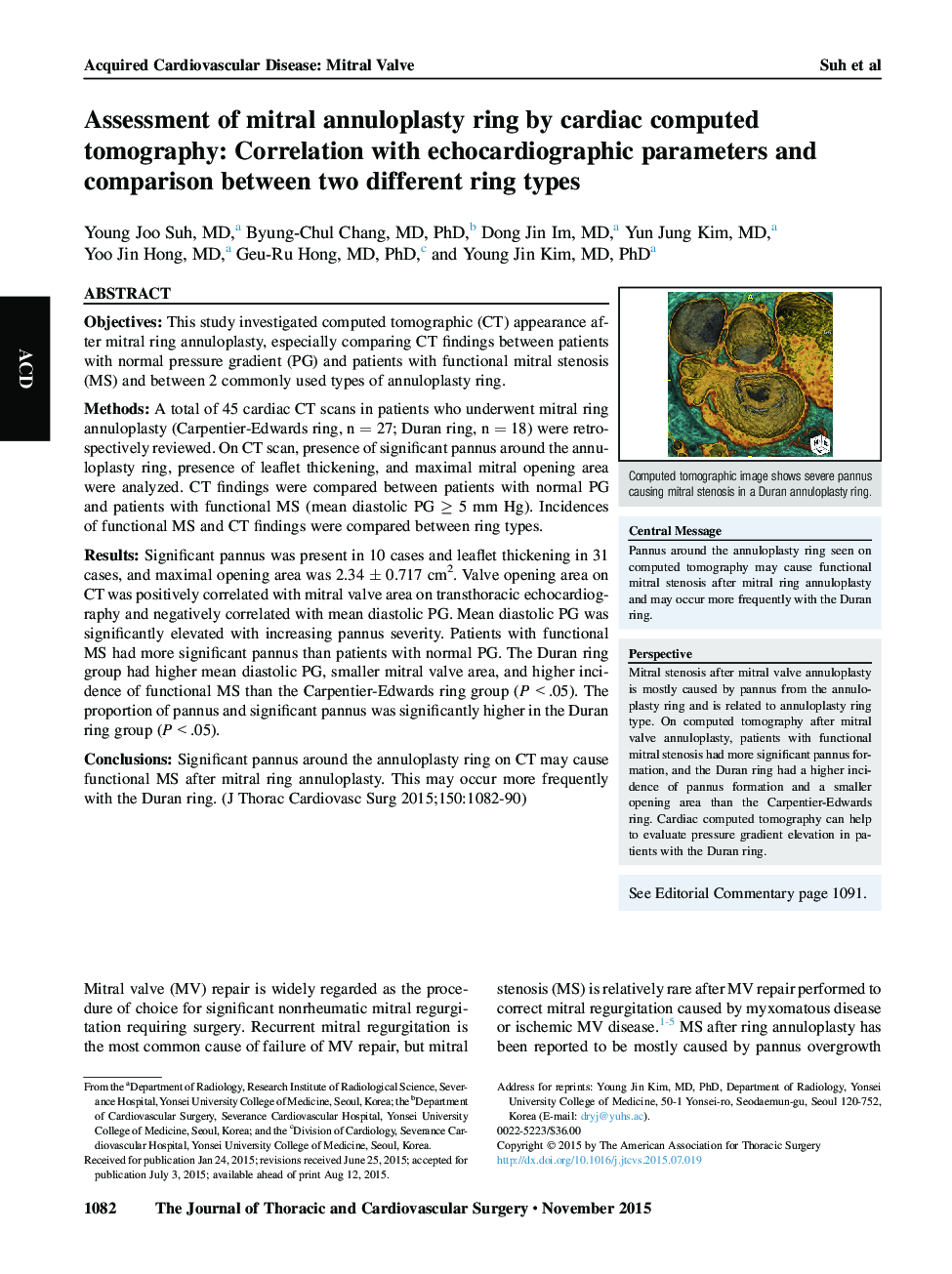| Article ID | Journal | Published Year | Pages | File Type |
|---|---|---|---|---|
| 2979237 | The Journal of Thoracic and Cardiovascular Surgery | 2015 | 9 Pages |
ObjectivesThis study investigated computed tomographic (CT) appearance after mitral ring annuloplasty, especially comparing CT findings between patients with normal pressure gradient (PG) and patients with functional mitral stenosis (MS) and between 2 commonly used types of annuloplasty ring.MethodsA total of 45 cardiac CT scans in patients who underwent mitral ring annuloplasty (Carpentier-Edwards ring, n = 27; Duran ring, n = 18) were retrospectively reviewed. On CT scan, presence of significant pannus around the annuloplasty ring, presence of leaflet thickening, and maximal mitral opening area were analyzed. CT findings were compared between patients with normal PG and patients with functional MS (mean diastolic PG ≥ 5 mm Hg). Incidences of functional MS and CT findings were compared between ring types.ResultsSignificant pannus was present in 10 cases and leaflet thickening in 31 cases, and maximal opening area was 2.34 ± 0.717 cm2. Valve opening area on CT was positively correlated with mitral valve area on transthoracic echocardiography and negatively correlated with mean diastolic PG. Mean diastolic PG was significantly elevated with increasing pannus severity. Patients with functional MS had more significant pannus than patients with normal PG. The Duran ring group had higher mean diastolic PG, smaller mitral valve area, and higher incidence of functional MS than the Carpentier-Edwards ring group (P < .05). The proportion of pannus and significant pannus was significantly higher in the Duran ring group (P < .05).ConclusionsSignificant pannus around the annuloplasty ring on CT may cause functional MS after mitral ring annuloplasty. This may occur more frequently with the Duran ring.
